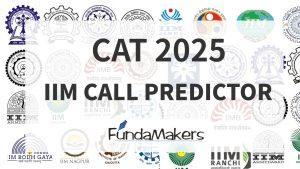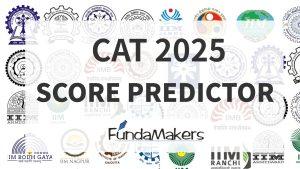Welcome to “Important Topics in CAT 2024,” your go-to blog for navigating the Common Admission Test (CAT) with confidence and clarity. As one of the most competitive entrance exams for prestigious business schools in India, CAT requires strategic preparation and an in-depth understanding of key subjects. This blog is dedicated to providing you with comprehensive insights into the most crucial topics, expert tips, and effective study techniques to help you excel. Whether you are a first-time test taker or aiming to improve your previous scores, our goal is to equip you with the knowledge and tools needed to achieve your MBA aspirations. Dive in to stay updated and make your CAT 2024 preparation journey both informed and successful.
The CAT (Common Admission Test) is structured into three primary sections: Verbal Ability and Reading Comprehension (VARC), Data Interpretation and Logical Reasoning (DILR), and Quantitative Ability (QA). The VARC section assesses your proficiency in English through reading comprehension passages, grammar, and vocabulary-based questions, demanding strong language skills and critical reading abilities. DILR evaluates your ability to interpret data from various sources, such as graphs and tables, and solve logical puzzles, requiring analytical thinking and problem-solving prowess. The QA section focuses on mathematical concepts, covering topics like arithmetic, algebra, geometry, and number systems, testing your numerical aptitude and accuracy. Mastery of these sections is crucial for a competitive CAT score, as each tests a distinct set of skills essential for success in business management programs.
Quantitative Aptitude (QA)
The Quantitative Ability (QA) section of the CAT exam is designed to evaluate a candidate’s mathematical proficiency and problem-solving skills. This section comprises both multiple-choice questions (MCQs) and Type in the Answer (TITA) questions, adding variety and testing precision. Candidates are allotted 40 minutes to navigate through this challenging segment. To excel in QA, it is imperative to focus on crucial topics such as arithmetic, algebra, geometry, number systems, and modern mathematics. A thorough understanding and practice of these areas can significantly boost performance. Given the time constraints and diverse question types, strategic preparation and time management are essential for scoring well in the QA section of CAT 2024.
Important Topics in QA for CAT 2024
Here’s a list of the most Important Topics asked in QA section of CAT exam:

Preparing for the Quantitative Ability (QA) section of the CAT exam requires a strategic approach, particularly considering the weightage of questions from different topics. To optimize your preparation, begin by analyzing previous years’ papers to identify the frequency and types of questions commonly asked. Prioritize topics that historically carry more weight, such as arithmetic, algebra, and geometry, as they often constitute a significant portion of the QA section. Create a balanced study plan that allocates more time to these high-weightage areas while ensuring you also cover less frequent topics like modern mathematics. Practice regularly with mock tests and timed quizzes to build speed and accuracy, and focus on mastering fundamental concepts to tackle both MCQs and TITA questions efficiently. By aligning your preparation with the weightage of questions, you can enhance your proficiency and boost your overall CAT score.
Also Read:
How to Solve Questions Based on Profit & Loss?
How to Solve Questions Based on Mensuration?
How to Solve Questions Based on Percentage?
How to Solve Questions Based on Time & Work?
How to Solve Questions Based on Time Distance & Speed?
How to Solve Questions Based on Number System?
How to Solve Questions Based on Ratio & Proportion?
Data Interpretation & Logical Reasoning (DI-LR)
The Data Interpretation and Logical Reasoning (DILR) section of the CAT exam is a crucial component, consisting of 32 questions that challenge candidates’ analytical and problem-solving abilities. This section is divided into two main areas: Data Interpretation (DI) and Logical Reasoning (LR). In DI, candidates are required to analyze and interpret data presented in various forms such as tables, graphs, and charts, demanding precision and the ability to draw accurate conclusions quickly. The LR part involves solving complex puzzles, identifying patterns, and understanding sequences, which tests logical thinking and the ability to work through intricate problems systematically. Excelling in the DILR section requires a combination of speed, accuracy, and strategic approach, as it plays a significant role in determining overall CAT scores and thus, the chances of securing admission to top business schools.
Important Topics in DI & LR for CAT 2024

Preparing for the Data Interpretation and Logical Reasoning (DILR) section of the CAT exam involves strategic practice and leveraging everyday activities to sharpen your skills. One effective method is integrating puzzles like Sudoku, crosswords, and brain teasers into your daily routine, as these activities enhance logical thinking and pattern recognition. Additionally, practicing with data sets, tables, and charts regularly will improve your ability to quickly interpret and analyze information. Based on the weightage of questions in the CAT exam, it is essential to prioritize areas with higher frequency, such as data tables and graphs in DI, and puzzles and arrangements in LR. Consistent practice with mock tests and previous years’ question papers will help you get familiar with the question patterns and improve your speed and accuracy. Focus on understanding the underlying logic of problems rather than rote learning solutions, and regularly review your mistakes to avoid repeating them. Balancing these preparation strategies will significantly strengthen your DILR skills and boost your overall CAT performance.
Also Read:
Short Cuts to Score 99 Percentile in DI & LR
Verbal Ability & Reading Comprehension (VARC)
The Verbal Ability and Reading Comprehension (VARC) section of the CAT exam is designed to test candidates’ proficiency in English through a combination of reading comprehension (RC) passages and verbal ability (VA) questions. An effective strategy involves dedicating the first 40 minutes to solving as many RCs as possible, as these typically form a significant portion of the section and require careful reading and analysis. The remaining 10 minutes should then be focused on the verbal ability questions, which may include grammar, sentence correction, para jumbles, and critical reasoning. Given that the difficulty level of the VARC section can vary each year, it’s crucial to allocate adequate preparation time to both RCs and VA. Consistent practice and balanced preparation can help in managing time effectively and adapting to the varying difficulty of the section on the exam day.
Important Topics in VARC for CAT 2024

Preparing for the VARC section of CAT 2024 requires a multi-faceted approach that integrates daily habits to enhance reading and vocabulary skills. Start by incorporating a diverse range of reading materials into your routine, such as newspapers, magazines, novels, and online articles, which will help you become accustomed to different writing styles and complex sentence structures. Make it a habit to learn and use new words daily by maintaining a vocabulary journal where you jot down unfamiliar words along with their meanings and usage. Engage in activities like solving crosswords, playing word games, and using vocabulary-building apps to make learning new words fun and effective. Additionally, practice summarizing articles and books to improve comprehension and retention, which is crucial for tackling reading comprehension passages efficiently. By integrating these methods into your daily life, you can significantly improve your proficiency in the VARC section, enhancing both your reading speed and verbal abilities.
Also Read:
How to Score 99 Percentile in VARC section of CAT?
Daily Articles for Enhancing Reading Comprehension for CAT
Where to Prepare for CAT?
FundaMakers offers a well-structured curriculum that covers all three sections of the CAT, including in-depth lessons on Verbal Ability and Reading Comprehension (VARC), Data Interpretation and Logical Reasoning (DILR), and Quantitative Ability (QA). With experienced faculty members who provide personalized guidance and mentorship, students can benefit from expert guidance.
Why Choose FundaMakers?


Also Read: Important tips for IIM Interview Round



